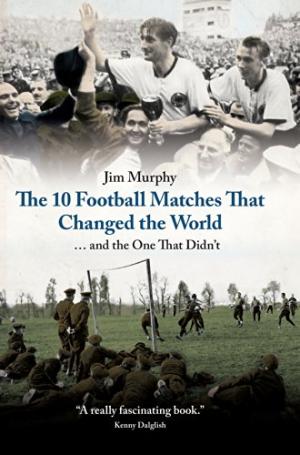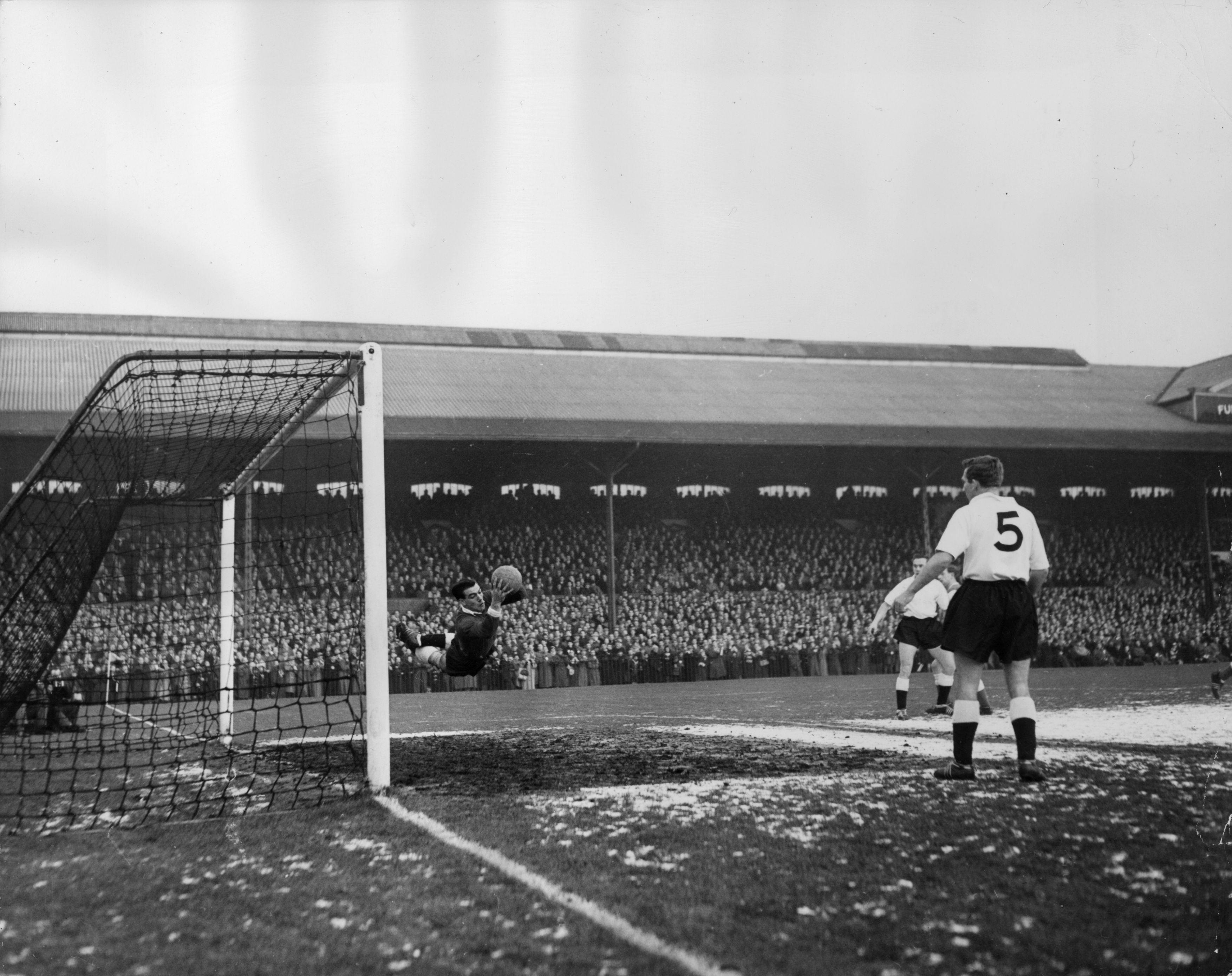Peterborough United first came to public attention in the 1950s when they routinely won the Midland League and just as routinely were denied admission to the Football League.
In January 1959, they were drawn against Fulham in the third round of the FA Cup. Being an undergraduate, I manufactured a reason to reschedule a tutorial so that a friend and I could get to the London Road Stadium. Wouldn't you know it? The match was then called off because of the weather and I had to lie low in case my tutor saw that I was still in college that day.
Peterborough seemed unbeatable at home, which made some Fulham fans uneasy about the tie. Having watched a fair amount of non-league football, I scoffed at their fears but when the match finally took place the Posh held Fulham to a goalless draw and only narrowly lost the replay.
Some six decades later both clubs are in the Championship and they met on Saturday in Peterborough. Perhaps this time it was United fans who felt apprehensive, wondering how their team would fare against the trailblazers who had won 7-0 at Blackburn.
In the first half, the hardworking Posh subdued their visitors and Aleksandar Mitrovic scarcely touched the ball. The home side came close to a goal when Jonson Clarke-Harris hit the woodwork and Marek Rodak thwarted Sammie Szmodics and Joe Ward.
At half-time, Marco Silva sent Kenny Tete in place of Denis Odoi, who was on a yellow card. The coach must have urged his team to buck up their ideas. Mitro caught fire once more and severely tested goalkeeper Dai Cornell but it was not until the 74th that Neeskens Kebano's cross gave our striker his 20th goal of the season.
Rodak still needed to be at his best to ensure three points with 75 per cent of fans voting him Man of the Match.
Silva was oddly ungenerous to say: "We were the best team from start to finish." I doubt he was that complimentary in the dressing room at halftime. Still, he and his players deserve great praise for five successive victories.
Lest we forget
I will finish my references to Jim Murphy's book 'The Ten Football Matches that Changed the World – And the One that Didn't' with two chapters particularly relevant at this time of Remembrance because they deal with the UK's relationship with Germany and a third with wider implications.

Murphy chronicles West Germany's exploits in the World Cup, specifically the Miracle of Bern in 1954, and the defeat of England in Mexico 16 years later. The miracle was that a team representing the new Federal Republic could overcome the brilliant (and ruthless) Hungarians especially after losing 8-3 to them in the group stage. Inevitably, conspiracy theories have since emerged. The fact that some German players subsequently caught yellow fever has suggested the use of illicit substances. The team got more legitimate benefit from the new boots designed by Adi Dessler (Adidas).
Sonke Wortman's film 'The Miracle of Bern' (2003) is sentimental and has unconvincing CGI effects, but it explains why the victory meant so much to the nation. Murphy quotes Christian Sachs, the head of office of the German Olympic Sports Federation, who said: "The Germans discovered that they could be patriotic without being xenophobic or nationalistic."
Sixty-seven years later, quite a few England supporters still need to grasp that lesson.
Fulham Library's annual sale
Like many Fulham residents, I have happy memories of the local public library's annual sale.
On offer were volumes no longer in demand but also some that had never reached the shelves. For a mere 10p I purchased 'Spiele die ich nie vergesse' published in January 1955 by Fritz Walter, the World Cup winning captain. It bore none of the library's usual marks so presumably it was a donation or acquisition that was regarded as being insufficiently interesting to be catalogued – even though it bore Fritz's signature. I confess that I still have not read it.
The 1954 World Cup had little coverage in the UK, but the subsequent ones have provided excellent television. Jim Murphy concentrates on the 1970 quarterfinal match between England and West Germany. Our first child was just five months old and we watched the match with some friends in Tottenham. England had a two-goal lead but allowed their opponents to equalise. When the match went into extra time, we were reluctant to keep our son from his bed so we set off for Fulham, confident that England, as in 1966, would emerge victorious.
On the Piccadilly Line there was no way to keep in touch with the match so when we got home, I was stunned to learn that West Germany had won 3-2. Goalkeeper Peter Bonetti was widely blamed for the defeat but Alan Mullery, who scored England's first goal, disagreed: "I'm sure Banksy (Gordon Banks) would have saved Beckenbauer's first goal. I don't blame Cat (Bonetti) for the other two…. We were 2-0 up and as a team we should have held on to that."
The defeat shocked the British public and just days later Harold Wilson's Labour Government was voted out of office in a General Election. Tony Crosland famously blamed Labour's defeat on 'a mix of party complacency and disgruntled "Match of the Day" millions.'
The West German game was indeed seen by millions, but Murphy has unearthed one watched by a small, literally captive audience – Bucks v Rangers in December 1967.
The venue was South Africa's Robben Island, where political prisoners including Nelson Mandela were held in appalling conditions. Communal activity was prohibited, and it needed a three-year campaign of passive resistance by the inmates supported by the International Red Cross and the courageous MP Helen Suzman to allow football to be played.
Three leagues were established within the prison, and Murphy learned from Dikgang Moseneke, the chairman of one of the leagues, who later became the Republic's Deputy Chief Justice: "It was football that kept hope alive. It suggested there was a world that required (the captives') thoughts, accomplishments and achievements. That's what it did for me. Soccer was one of the array of means we used – to ensure we survived imprisonment."
As a Fulham supporter I have always regretted that after his retirement Johnny Haynes chose to play in the all-white South African game and that Jimmy Hill later broke an international boycott by taking a touring team there.
Christmas at war
The final chapter is particularly relevant this time of year. Jim Murphy is alluding to the improvised kickabouts in No Man's Land between German and United Kingdom troops at Christmas 1914. As the author puts it, after this fraternisation 'things got back to the accepted madness of normality and the opposing forces spent four years decimating each other'.
On the first day of the Battle of Loos (25 September 1915) the British advanced out of the trenches, following a football that had been punted ahead of them and shouting 'Play up, London Irish'. Casualties were horrendous but somehow the ball survived and now rests in the London Irish Museum.
Among the many who died on that first day was Capt Guy Willock, one of 230 names commemorated on the Roll of Honour at St Andrew's Church Fulham Fields. In 2011, photographer Michael St Maur Shiel was permitted to place the historic ball on Guy Willock's grave for a memorial picture. It has become yet another image recalling the horrors of 20th Century warfare.
The views expressed in this blog are those of the author and unless specifically stated are not necessarily those of Hammersmith & Fulham Council.
Want to read more news stories like this? Subscribe to our weekly e-news bulletin.

